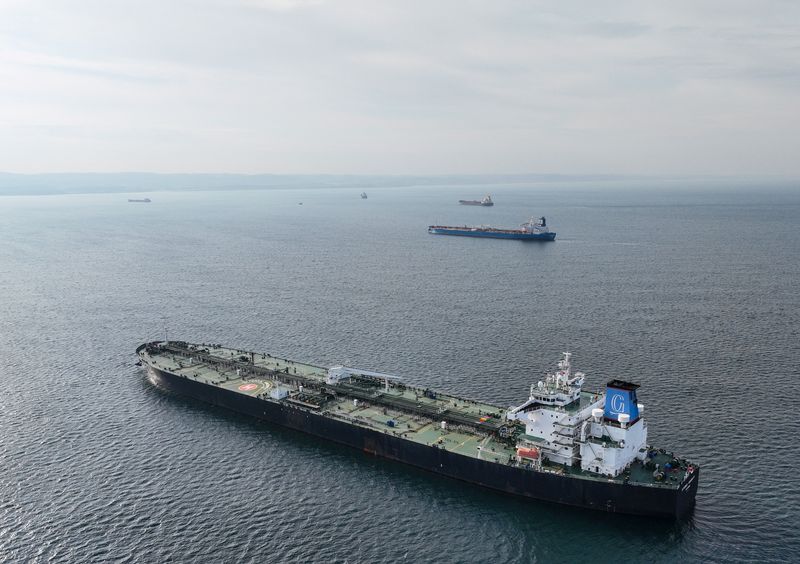By Georgina McCartney
HOUSTON (Reuters) -Global oil benchmark futures settled at their lowest level since December 2021 on Tuesday, after OPEC+ revised down its demand forecast for this year and 2025, offsetting supply concerns from Tropical Storm Francine.
Brent crude futures settled down $2.65, or 3.69%, at $69.19 a barrel. U.S. West Texas Intermediate (WTI) crude settled down $2.96, or 4.31%, to $65.75 a barrel.
Both benchmarks dropped by more than $3 during the session, after each rose by about 1% on Monday. WTI crude futures fell more than 5% on Tuesday, hitting their lowest levels since May 2023.
On Tuesday, the Organization of the Petroleum Exporting Countries (OPEC) in a monthly report said world oil demand would rise by 2.03 million barrels per day (bpd) in 2024, down from last month’s forecast for growth of 2.11 million bpd.
Until last month, OPEC had kept the forecast unchanged since it was first made in July 2023.
OPEC also cut its 2025 global demand growth estimate to 1.74 million bpd from 1.78 million bpd. Prices slid on the weakening global demand prospects and expectations of oil oversupply.
Separately, the U.S. Energy Information Administration (EIA) on Tuesday said global oil demand is set to grow to a bigger record this year while output growth will be smaller than prior forecasts.
Global oil demand is expected to average around 103.1 million barrels per day this year, the EIA said, some 200,000 bpd higher than its previous forecast of 102.9 million bpd.
Oil prices remained depressed after the EIA forecast release, as concerns about China continued to weigh on prices.
Data released on Tuesday showed China’s exports grew in August at their fastest in nearly 1-1/2 years, but imports disappointed with domestic demand depressed.
Meanwhile, Asian refiners’ margins fell to their lowest seasonal level since 2020 last week on rising supplies of diesel and gasoline.
“There’s almost no oil demand growth in the advanced economies this year. Fiscal stimulus in China has not boosted the construction sector; that’s one big reason Chinese demand for diesel is shrinking,” said Clay Seigle, an oil market strategist.
Investors are increasingly pricing in a slowing global economy, according to Phil Flynn, a senior analyst at Price Futures Group.
Energy stocks were the biggest loser among the sectors on Tuesday. Hess (NYSE:), Chevron (NYSE:), Occidental Petroleum (NYSE:), Halliburton (NYSE:), SLB, Ovintiv (NYSE:), Devon Energy (NYSE:), all set new intraday 52-week lows on Tuesday.
STORM HITS U.S. OUTPUT
Meanwhile, Tropical Storm Francine barrelled across the Gulf of Mexico driving operators to shut in around a quarter of offshore crude production, the U.S. Bureau of Safety and Environmental Enforcement said on Tuesday.
The U.S. Gulf of Mexico accounts for about 15% of all domestic oil production and 2% of output, according to federal data.
The storm was on track to become a hurricane on Tuesday, the U.S. National Hurricane Center said.
Exxon Mobil (NYSE:), Shell (LON:) and Chevron have removed offshore staff and halted some Gulf of Mexico oil and gas operations.
So far, production shut-ins have failed to offset weak demand sentiment and support prices, analysts said.
Meanwhile, oil and gasoline inventories fell while distillates rose last week, according to market sources citing American Petroleum Institute figures on Tuesday.

The API figures showed crude stocks fell by 2.793 million barrels in the week ended Sept. 6, the sources said, speaking on condition of anonymity. Gasoline inventories fell by 513,000 barrels, and distillates rose by 191,000 barrels.
Investors await weekly oil stock data from the EIA, published at 10:30 a.m. EDT (1430 GMT) on Wednesday.

